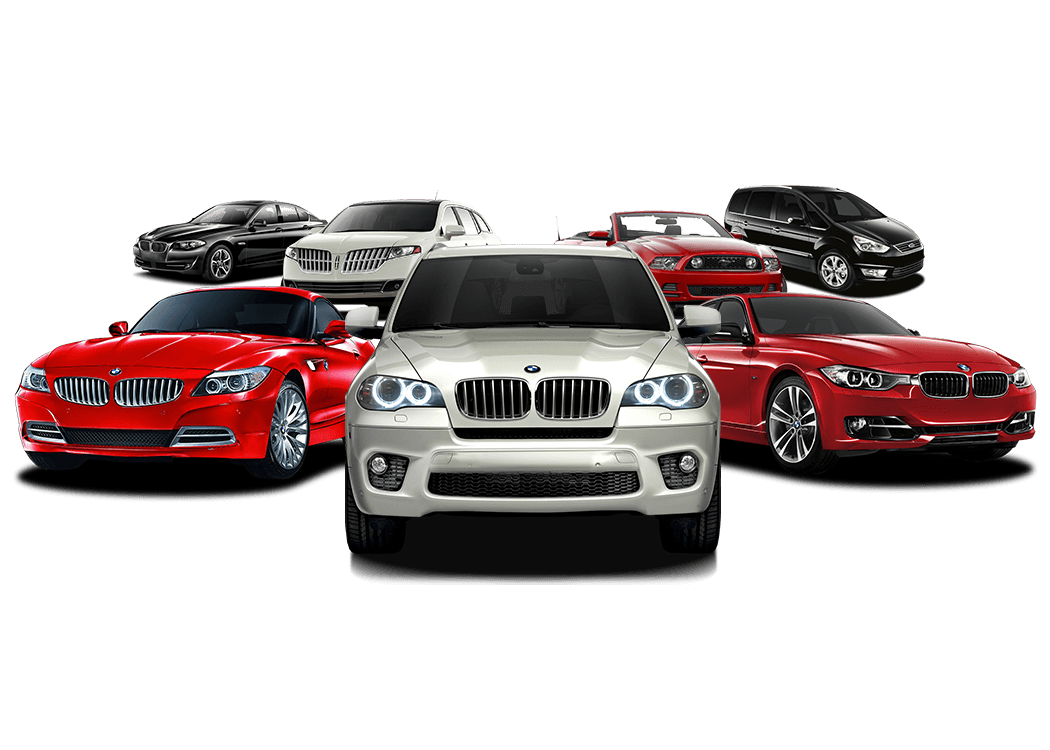Итальянская компания представила электрический фургон Fiat E-Ulysse 2022 модельного года. Это вторая, полностью электрическая модель автопроизводителя. Fiat предлагает широкий спектр систем помощи водителю и безопасности для e-Ulysse.
Когда-то Fiat предлагал европейским покупателям скромный минивэн под названием Ulysse. Его перестали продавать в 2010 году, но теперь он «вернулся» с новым внешним видом и полностью электрической силовой установкой. Это вторая специализированная электрическая модель Fiat после нового 500e, и, как и небольшой городской автомобиль, e-Ulysse нацелен в первую очередь на городские рынки.
Доступны два варианта аккумуляторов емкостью 50 или 75 кВт·ч с максимальным запасом хода в 330 километров, согласно цикла WLTP.
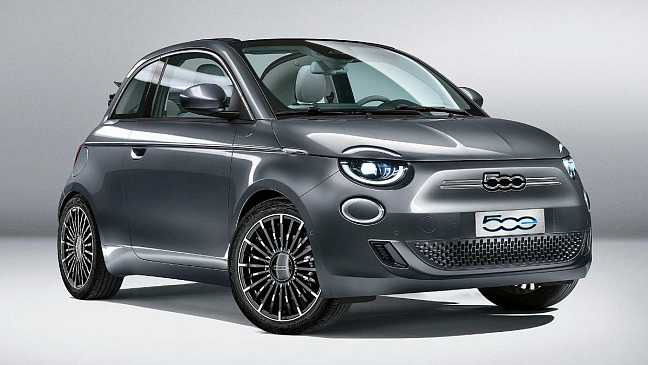
Fiat станет полностью электрическим брендом к 2027 году
Стандартная система быстрой зарядки мощностью 100 кВт может восстановить 80% мощности за 45 минут. Электронный Ulysse генерирует максимум 136 лошадиных сил (101 киловатт) и 260 Нм крутящего момента, и поэтому скорость не является его сильной стороной. Fiat не предоставляет статистику ускорения, но максимальная скорость указана как 130 км/ч.
Такие вещи, вероятно, не будут иметь значения для покупателей e-Ulysse, которыми, по мнению Fiat, могут быть службы такси, отели или другие автопарковые компании, которым нужно ТС с нулевым уровнем выбросов. В связи с этим многоцелевой автомобиль предлагает обширные конфигурации для семи или восьми пассажиров. В комплектации Lounge с сиденьями для семи пассажиров второй ряд e-Ulysse может быть обращен к третьему со складным столиком между ними, что привело к тому, что Fiat назвал этот вариант «гостиной». Конфигурация с восемью пассажирами (неофициально называемая шаттлом) добавляет дополнительное место во втором ряду.
Помимо перевозки большого количества людей, Fiat стремится подчеркнуть универсальность e-Ulysse. Есть 12 различных конфигураций для восьмиместного автомобиля; это число увеличивается до 16 в комплектации с семью пассажирами, а вышеупомянутый стол может складываться в несколько положений. Средние и задние сиденья установлены на направляющих для удобства установки и снятия, но с установленными сиденьями по-прежнему доступно 4 200 литров грузового пространства. Выберите удлиненную версию Long, объем которой увеличивается до 4 900 литров.
Что касается технологий, Fiat предлагает широкий спектр систем помощи водителю и безопасности для e-Ulysse. Среди них автоматическое экстренное торможение, предупреждение о выезде с полосы движения, мониторинг слепых зон и распознавание дорожных знаков, хотя Fiat не ясно, являются ли эти системы стандартными или дополнительными. 7-дюймовый сенсорный экран предлагается в топовых комплектациях. Среди доступных опций также перечислены панорамная крыша с кожаными сиденьями, ксеноновые фары, задняя дверь с электроприводом и портативное устройство для дезинфекции воздуха.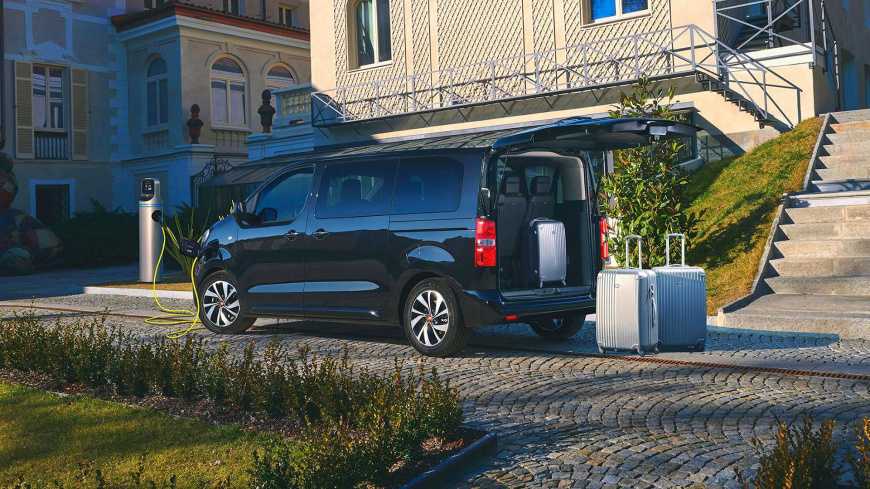
Не так давно, наше издание писало о том, что Fiat 500 получил лимитированную серию Giallissima в Японии. Полностью электрический Fiat 500 был представлен в 2020 году, но итальянская компания продолжила предлагать старую модель с ДВС как более дешевую альтернативу. Именно она и получила новое дизайнерское исполнение.
The Italian Art of Hospitality: the “Living room” on 4 wheels.
E-Ulysse stands as the paradigm of Italian hospitality as distinguished all over the world: the welcome it offers can be seen above all in the configuration of the interior area, analogous to a “Living space”, to bring associates or customers into.
Well-being on board.
On E-Ulysse makes its debut a new air sanitizing gadget. This is an ingenious, and easy-to-use device, completely FIAT design. It can be used in the car and, being portable, it can be given other places by the customer, helping the hygiene inside the cabin and the removal of majority of bacteria that can go into the guest compartment.
Additionally, wellness is likewise boosted by the three-zone air conditioning, with different controls for each (for the driver, front guest, and back).
Fast Charging (10 -> 80%)
Rapid charging enables longer journeys by adding as much range as possible in the shortest amount of time. Charging power will decrease significantly after 80% state-of-charge has been reached. A typical rapid charge therefore rarely exceeds 80% SoC. The rapid charge rate of an EV depends on the charger used and the maximum charging power the EV can handle. The table below shows all details for rapid charging the Fiat E-Ulysse L3 50 kWh.
- Max. Power: maximum power provided by charge point
- Avg. Power: average power provided by charge point over a session from 10% to 80%
- Time: time needed to charge from 10% to 80%
- Rate: average charging speed over a session from 10% to 80%
Europe
| Combined Charging System (CCS Combo 2) |
|---|
| Charging Point | Max. Power | Avg. Power | Time | Rate |
|---|---|---|---|---|
| CCS (50 kW DC) | 50 kW | 40 kW † | 51 min | 91 mph |
| CCS (100 kW DC) | 100 kW | 75 kW † | 27 min | 170 mph |
| CCS (150 kW DC) | 101 kW † | 78 kW † | 26 min | 170 mph |
| This vehicle supports Autocharge |
|---|
† = Limited by charging capabilities of vehicle
Autocharge: allows for a vehicle to initiate charging automatically on supported CCS charge points.
Actual charging rates may differ from data shown due to factors like outside temperature, state of the battery and driving style.
(Advertisement)
2023 Fiat E-Ulysse Specs
- Power 134 hp 100 kW.
- Battery 50/ 75 kWh.
- Top speed 80 miles per hour (130 km/h).
- Driving variety (electric): 205 miles (300 km).
- Type: Minivan|Electric.
2023 Fiat E-Ulysse Highlights
- FIAT presents the new E-Ulysse, the brand name’s 2nd all-electric car to follow the New 500.
- New E-Ulysse: “The Italian Art of Hospitality”. FIAT’s go back to the MPV sector, the pinnacle of Italian hospitality and sustainability.
- A new air sanitizing device debuts, helping the hygiene inside the cabin and the removal of majority of bacteria.
- Up to 12 configurations of interior area in the 8-seater version and as much as 16 setups in the 7-seater “living room” variation: modularity, comfort, and resourcefulness.
- The 100% electric power supply and compact dimensions ensure accessibility in the heart of the city and fulfill needs in terms of sustainable movement.
Gallery 2023 Fiat E-Ulysse Prices, Specs, and Pictures
Home and Destination Charging (0 -> 100%)
Charging is possible by using a regular wall plug or a charging station. Public charging is always done through a charging station. How fast the EV can charge depends on the charging station (EVSE) used and the maximum charging capacity of the EV. The table below shows all possible options for charging the Fiat E-Ulysse L2 75 kWh. Each option shows how fast the battery can be charged from empty to full.
Europe
Charging an EV in Europe differs by country. Some European countries primarily use 1-phase connections to the grid, while other countries are almost exclusively using a 3-phase connection. The table below shows all possible ways the Fiat E-Ulysse L2 75 kWh can be charged, but some modes of charging might not be widely available in certain countries.
| Type 2 (Mennekes — IEC 62196) |
|---|
| Charging Point | Max. Power | Power | Time | Rate |
|---|---|---|---|---|
| Standard 7.4 kW On-Board Charger | ||||
| Wall Plug (2.3 kW) | 230V / 1x10A | 2.3 kW | 35 hours | 8 km/h |
| 1-phase 16A (3.7 kW) | 230V / 1x16A | 3.7 kW | 21h45m | 12 km/h |
| 1-phase 32A (7.4 kW) | 230V / 1x32A | 7.4 kW | 11 hours | 24 km/h |
| 3-phase 16A (11 kW) | 230V / 1x16A | 3.7 kW † | 21h45m | 12 km/h |
| 3-phase 32A (22 kW) | 230V / 1x32A | 7.4 kW † | 11 hours | 24 km/h |
| Optional 11.0kW On-Board Charger * | ||||
| Wall Plug (2.3 kW) | 230V / 1x10A | 2.3 kW | 35 hours | 8 km/h |
| 1-phase 16A (3.7 kW) | 230V / 1x16A | 3.7 kW | 21h45m | 12 km/h |
| 1-phase 32A (7.4 kW) | 230V / 1x32A | 7.4 kW | 11 hours | 24 km/h |
| 3-phase 16A (11 kW) | 400V / 3x16A | 11 kW | 7h30m | 35 km/h |
| 3-phase 32A (22 kW) | 400V / 3x16A | 11 kW † | 7h30m | 35 km/h |
† = Limited by on-board charger, vehicle cannot charge faster.
* = Optional in some countries, standard in others. Check local specifications for details.
2023 Fiat E-Ulysse Security and infotainment
E-Ulysse offers an impressive level of Advanced Driver Assistance Systems (ADAS), to make it simpler for the driver to prevent prospective dangers.
The very first is Traffic Sign Recognition, which utilizes the on-board cam to recognize traffic indications, reports them on the screen, and informs the driver of the present speed limit. Lane Departure Warning immediately cautions the driver if the vehicle is veering out of its lane, and Side Blind-Spot Alert keeps track of rear blind spots, sending out a light signal to the wing mirror in case the car comes too near any other vehicles while overtaking.
Plus Forward Collision Warning, which utilizes the video camera to check out the car’s trajectory and cautions the driver of any accident dangers with other vehicles or pedestrians. Active Emergency Brake Control autonomously triggers the brakes in case of a crash risk, while the Rear-view Camera offers a 180 ° image around the vehicle, to make parking simpler. Lastly, the Electronic Stability Program (ESP) is governed by the Grip Control function, which can be changed according to the kind of road surface area: tarmac, sand, mud or snow.
Read: 2023 Subaru Outback Redesign and Hybrid
In terms of infotainment, 3 levels of integrated radio are offered. The top-of-the-range variation includes a 7″ color touchscreen with Apple Car Play, Android Auto, and the Connect Nav service supplied by TomTom, with information on traffic, car park, gas stations, local weather and Points of Interest.
Home and Destination Charging (0 -> 100%)
Charging is possible by using a regular wall plug or a charging station. Public charging is always done through a charging station. How fast the EV can charge depends on the charging station (EVSE) used and the maximum charging capacity of the EV. The table below shows all possible options for charging the Fiat E-Ulysse L3 50 kWh. Each option shows how fast the battery can be charged from empty to full.
Europe
Charging an EV in Europe differs by country. Some European countries primarily use 1-phase connections to the grid, while other countries are almost exclusively using a 3-phase connection. The table below shows all possible ways the Fiat E-Ulysse L3 50 kWh can be charged, but some modes of charging might not be widely available in certain countries.
| Type 2 (Mennekes — IEC 62196) |
|---|
| Charging Point | Max. Power | Power | Time | Rate |
|---|---|---|---|---|
| Standard 7.4 kW On-Board Charger | ||||
| Wall Plug (2.3 kW) | 230V / 1x10A | 2.3 kW | 23h45m | 5 mph |
| 1-phase 16A (3.7 kW) | 230V / 1x16A | 3.7 kW | 14h45m | 7 mph |
| 1-phase 32A (7.4 kW) | 230V / 1x32A | 7.4 kW | 7h30m | 15 mph |
| 3-phase 16A (11 kW) | 230V / 1x16A | 3.7 kW † | 14h45m | 7 mph |
| 3-phase 32A (22 kW) | 230V / 1x32A | 7.4 kW † | 7h30m | 15 mph |
| Optional 11.0kW On-Board Charger * | ||||
| Wall Plug (2.3 kW) | 230V / 1x10A | 2.3 kW | 23h45m | 5 mph |
| 1-phase 16A (3.7 kW) | 230V / 1x16A | 3.7 kW | 14h45m | 7 mph |
| 1-phase 32A (7.4 kW) | 230V / 1x32A | 7.4 kW | 7h30m | 15 mph |
| 3-phase 16A (11 kW) | 400V / 3x16A | 11 kW | 5 hours | 22 mph |
| 3-phase 32A (22 kW) | 400V / 3x16A | 11 kW † | 5 hours | 22 mph |
† = Limited by on-board charger, vehicle cannot charge faster.
* = Optional in some countries, standard in others. Check local specifications for details.
Home and Destination Charging (0 -> 100%)
Charging is possible by using a regular wall plug or a charging station. Public charging is always done through a charging station. How fast the EV can charge depends on the charging station (EVSE) used and the maximum charging capacity of the EV. The table below shows all possible options for charging the Fiat E-Ulysse L2 50 kWh. Each option shows how fast the battery can be charged from empty to full.
Europe
Charging an EV in Europe differs by country. Some European countries primarily use 1-phase connections to the grid, while other countries are almost exclusively using a 3-phase connection. The table below shows all possible ways the Fiat E-Ulysse L2 50 kWh can be charged, but some modes of charging might not be widely available in certain countries.
| Type 2 (Mennekes — IEC 62196) |
|---|
| Charging Point | Max. Power | Power | Time | Rate |
|---|---|---|---|---|
| Standard 7.4 kW On-Board Charger | ||||
| Wall Plug (2.3 kW) | 230V / 1x10A | 2.3 kW | 23h45m | 8 km/h |
| 1-phase 16A (3.7 kW) | 230V / 1x16A | 3.7 kW | 14h45m | 13 km/h |
| 1-phase 32A (7.4 kW) | 230V / 1x32A | 7.4 kW | 7h30m | 25 km/h |
| 3-phase 16A (11 kW) | 230V / 1x16A | 3.7 kW † | 14h45m | 13 km/h |
| 3-phase 32A (22 kW) | 230V / 1x32A | 7.4 kW † | 7h30m | 25 km/h |
| Optional 11.0kW On-Board Charger * | ||||
| Wall Plug (2.3 kW) | 230V / 1x10A | 2.3 kW | 23h45m | 8 km/h |
| 1-phase 16A (3.7 kW) | 230V / 1x16A | 3.7 kW | 14h45m | 13 km/h |
| 1-phase 32A (7.4 kW) | 230V / 1x32A | 7.4 kW | 7h30m | 25 km/h |
| 3-phase 16A (11 kW) | 400V / 3x16A | 11 kW | 5 hours | 37 km/h |
| 3-phase 32A (22 kW) | 400V / 3x16A | 11 kW † | 5 hours | 37 km/h |
† = Limited by on-board charger, vehicle cannot charge faster.
* = Optional in some countries, standard in others. Check local specifications for details.
Home and Destination Charging (0 -> 100%)
Charging is possible by using a regular wall plug or a charging station. Public charging is always done through a charging station. How fast the EV can charge depends on the charging station (EVSE) used and the maximum charging capacity of the EV. The table below shows all possible options for charging the Fiat E-Ulysse L3 50 kWh. Each option shows how fast the battery can be charged from empty to full.
Europe
Charging an EV in Europe differs by country. Some European countries primarily use 1-phase connections to the grid, while other countries are almost exclusively using a 3-phase connection. The table below shows all possible ways the Fiat E-Ulysse L3 50 kWh can be charged, but some modes of charging might not be widely available in certain countries.
| Type 2 (Mennekes — IEC 62196) |
|---|
| Charging Point | Max. Power | Power | Time | Rate |
|---|---|---|---|---|
| Standard 7.4 kW On-Board Charger | ||||
| Wall Plug (2.3 kW) | 230V / 1x10A | 2.3 kW | 23h45m | 8 km/h |
| 1-phase 16A (3.7 kW) | 230V / 1x16A | 3.7 kW | 14h45m | 12 km/h |
| 1-phase 32A (7.4 kW) | 230V / 1x32A | 7.4 kW | 7h30m | 24 km/h |
| 3-phase 16A (11 kW) | 230V / 1x16A | 3.7 kW † | 14h45m | 12 km/h |
| 3-phase 32A (22 kW) | 230V / 1x32A | 7.4 kW † | 7h30m | 24 km/h |
| Optional 11.0kW On-Board Charger * | ||||
| Wall Plug (2.3 kW) | 230V / 1x10A | 2.3 kW | 23h45m | 8 km/h |
| 1-phase 16A (3.7 kW) | 230V / 1x16A | 3.7 kW | 14h45m | 12 km/h |
| 1-phase 32A (7.4 kW) | 230V / 1x32A | 7.4 kW | 7h30m | 24 km/h |
| 3-phase 16A (11 kW) | 400V / 3x16A | 11 kW | 5 hours | 36 km/h |
| 3-phase 32A (22 kW) | 400V / 3x16A | 11 kW † | 5 hours | 36 km/h |
† = Limited by on-board charger, vehicle cannot charge faster.
* = Optional in some countries, standard in others. Check local specifications for details.
Drive like a car, load like a van
E-Ulysse is a Multi-Purpose Vehicle with the DNA of a car: the beginning point is the driving position comparable to a car’s, making sure exceptional convenience even on long journeys. The raised position of the seat also makes sure optimum presence on the road, while availability continues to be made uncomplicated and simple, by the ergonomic step in the cabin. Plus its strength, the tiniest measurements in the sector (height <1.90 meters, length of 4.95 or 5.3 m in the Long version), to guarantee handling and driveability.
Read: 2023 Honda Pilot Hybrid Release Date
Lastly, roadway holding, suspension and comfort filtering are ensured in all driving conditions, courtesy of the 4 independent wheel suspensions and variable stiffness springs.
The load volume leads the sector, with trunk capacity of 4,200 liters in the standard variation and 4,900 liters in the Long (900 and 1,500 L respectively with all seats inhabited). Items as much as 3.1 meters long can also be loaded into the basic variation, or approximately 3.5 m in the Long.
Fast Charging (10 -> 80%)
Rapid charging enables longer journeys by adding as much range as possible in the shortest amount of time. Charging power will decrease significantly after 80% state-of-charge has been reached. A typical rapid charge therefore rarely exceeds 80% SoC. The rapid charge rate of an EV depends on the charger used and the maximum charging power the EV can handle. The table below shows all details for rapid charging the Fiat E-Ulysse L3 50 kWh.
- Max. Power: maximum power provided by charge point
- Avg. Power: average power provided by charge point over a session from 10% to 80%
- Time: time needed to charge from 10% to 80%
- Rate: average charging speed over a session from 10% to 80%
Europe
| Combined Charging System (CCS Combo 2) |
|---|
| Charging Point | Max. Power | Avg. Power | Time | Rate |
|---|---|---|---|---|
| CCS (50 kW DC) | 50 kW | 40 kW † | 51 min | 140 km/h |
| CCS (100 kW DC) | 100 kW | 75 kW † | 27 min | 280 km/h |
| CCS (150 kW DC) | 101 kW † | 78 kW † | 26 min | 290 km/h |
| This vehicle supports Autocharge |
|---|
† = Limited by charging capabilities of vehicle
Autocharge: allows for a vehicle to initiate charging automatically on supported CCS charge points.
Actual charging rates may differ from data shown due to factors like outside temperature, state of the battery and driving style.
(Advertisement)
2023 Fiat E-Ulysse — Price and Details
So far, customers have been a little hesitant at Fiat when it comes to e-cars. Apart from the renovated cult 500, no model has been electrified so far.
2022-05-05 10:10:41 ELECTRIC CAR
Now, with the E-Ulysse, a second model series is added and promises excitement in the van segment. This decision certainly has nothing to do with an odyssey, even though Odysseus, the godfather of all things, is famous for it. In association with France, there was already a space glider with the same name.
Now there is a new edition under the joint Stellantis label. Those who find similarities between the E-Ulysse and the Peugeot e-Traveller, Citroën ë-Spacetourer and Opel Zafira-e Life are not far wrong. The brothers in the bus alliance share the same group technology and are also built-in parallel in Valenciennes, France. However, each brand is free to design the nose and a few other details to its liking.
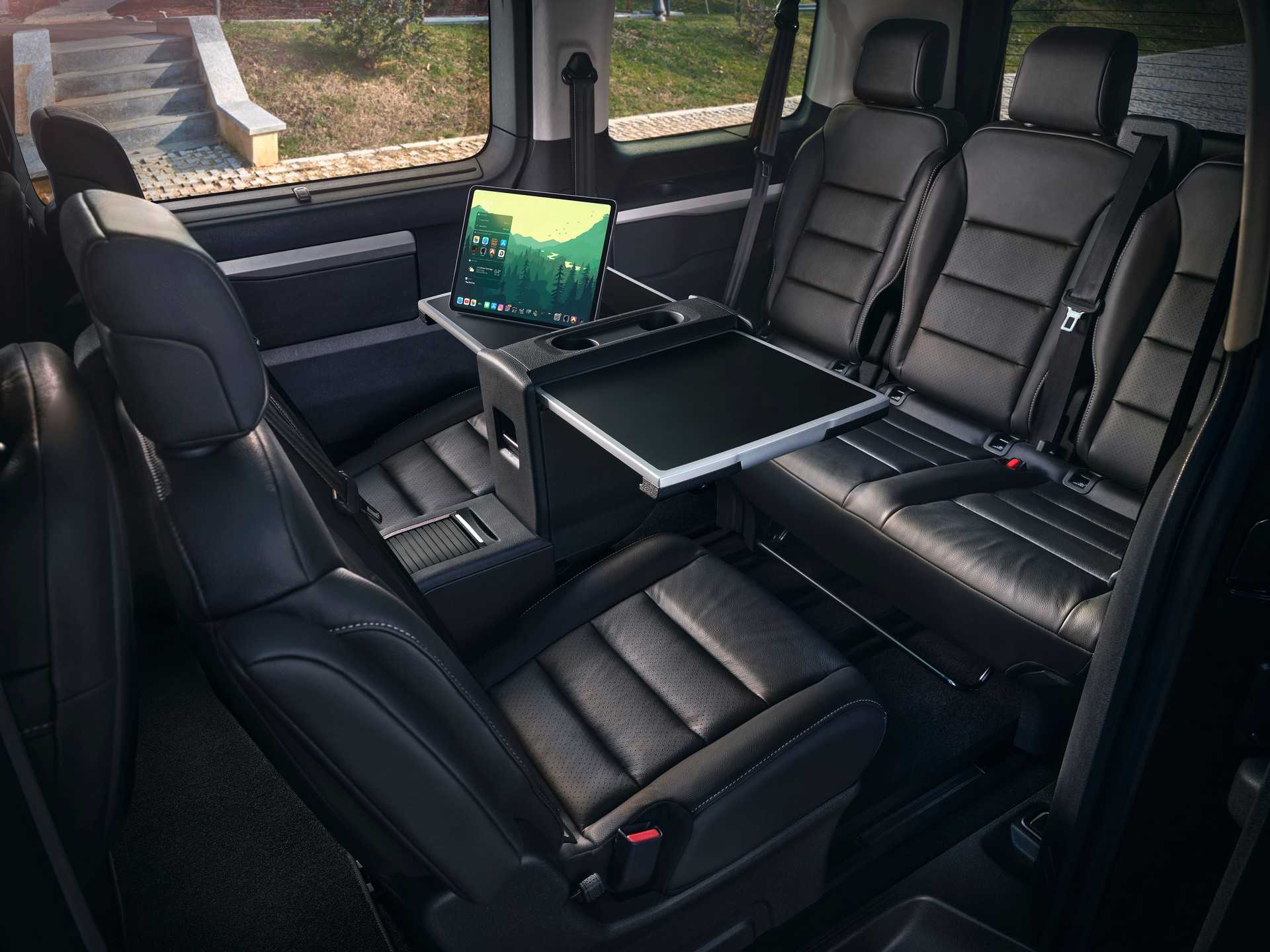
Fiat’s adventure-sounding power box is aimed at all those for whom a station wagon is already too small and who need more comfort than parcel delivery men and tradesmen in the identically constructed E-Scudo van (from 45,100 euros gross). Such as Taxi drivers, shuttle services or self-employed people with a lot of luggage. And because it is so difficult to fit their needs under one roof, the range is correspondingly variable with two lengths and two battery sizes.
The standard length of the E-Ulysse (from 55,990 Euros) is 4.95 metres, and the L-version (extra charge: 1000 Pound) is 5.30 metres. With a payload of 800 kilos, it can carry up to 3.6 cubic metres of cargo — or up to eight people. The seats, optionally available in leather, heated and with massage function, can be moved, folded and, of course, removed at will. And the top version can even be converted into a conference vehicle by turning the middle seat towards the rear.
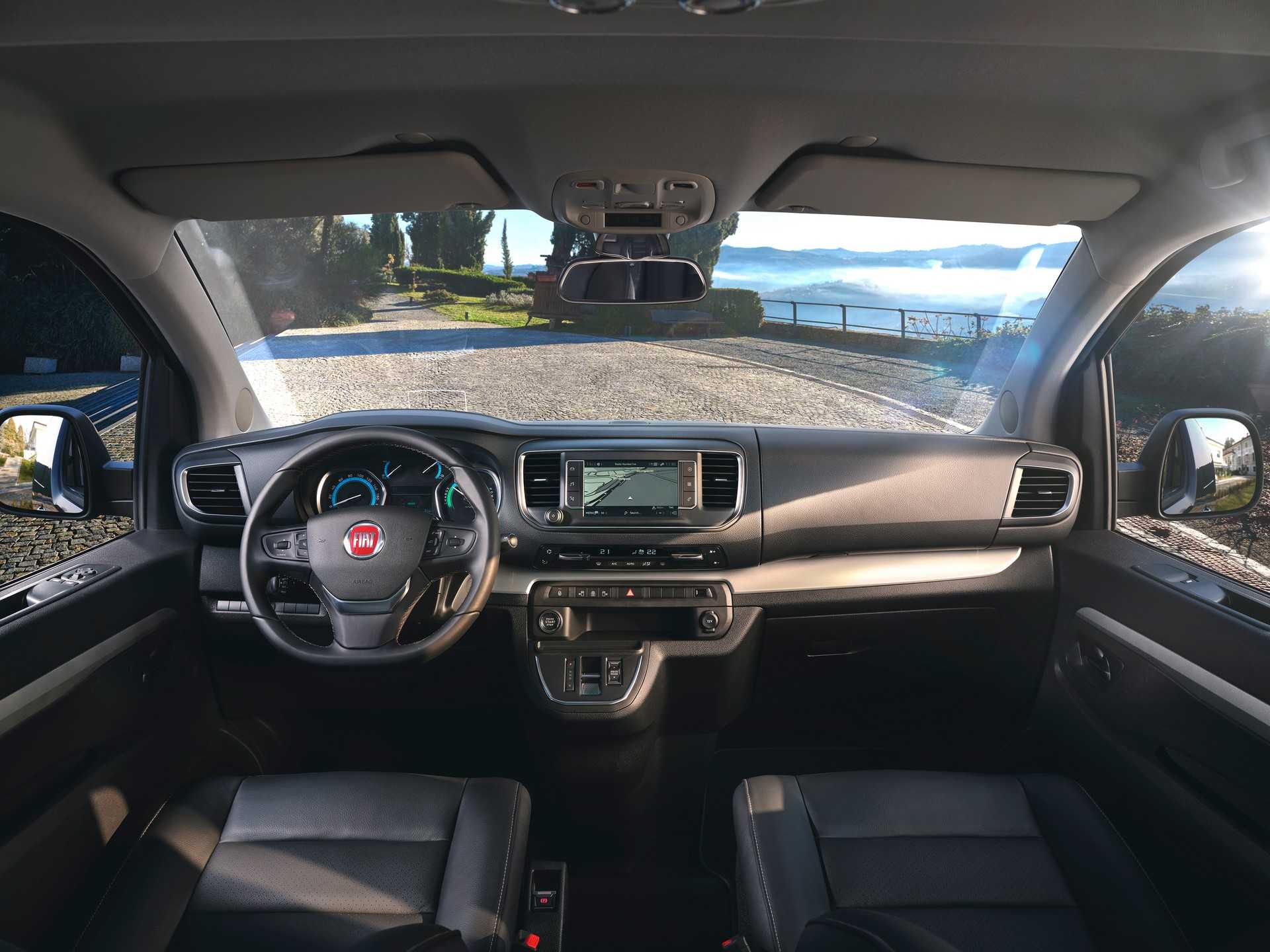
The range can also be varied. The battery installed in the underbody can be ordered with 50 kWh and 230 kilometres (WLTP) or — for an extra charge of 6000 euros — with 75 kWh and 330 kilometres. If you mainly drive in the city and save on heating and air conditioning, the daily minus to the laboratory value is not great in either case. Of course, the E-Ulysse officially reaches 130 km/h.
If you don’t feel so good about it, you can also take it in hand: With the switch set to «Eco», a meagre 60 kW is available, with «Normal» a respectable 80 and with the switch set to «Sport», the full 100 kW is available. Despite the two-tonne kerb weight, the car is well suited for everyday driving. However, the opposite is more sustainable: take your foot off the pedal as often as possible and use recuperation to gain power. The level can be selected in two stages, whereby «B» sucks up a lot of propulsion, but still manages without brake lights.
No matter how economical the ride, the battery will eventually run out. Half an hour at a 100-kW charger will charge it to 80 per cent (45 minutes for the big one), five hours at a wall box (the 75-kWh battery allows itself a good seven), and six times as long at a domestic socket. An on-board charger with 11 kW for a three-phase alternating current comes as standard.
The E-Ulysse cannot quite deny its relationship to a commercial vehicle. Although it has rear wishbones with coil springs instead of the rigid axle common in this segment, it is more pleasant to drive loaded than empty. The steering could be a little more direct, but the turning circle of 11.30 metres (L version 12.40 metres) is pleasantly city-friendly. Speaking of which: with a height of around 1.90 metres, even the entrance to a multi-storey car park is no obstacle. And to ensure that nothing goes wrong on the construction site, a traction control system is on offer.
2023 Fiat E-Ulysse Modularity, comfort, and ingenuity
In the Lounge trim level, the new E-Ulysse provides the alternative of a genuine “living space” on 4 wheels, with 5 comfortable seats in the rear, to spend quality time in with your travel companions, in addition to making it possible to organize service meetings.
The particularly large seats and reclining armrests ensure the convenience needed. The double folding table can likewise be moved in between and the second and 3rd rows as an ideal surface area for the widest range of activities.
It includes numerous storage areas and can even be closed to decrease the footprint, vanishing between the seats.
In both the 7-seater “Living space” variation and the 8-seater Shuttle, all the E-Ulysse’s rear seats are installed on rails, so they can quickly be moved, reclined or perhaps eliminated, all with a simple action.
Read: 2023 Buick Envision Redesign and Colors
The interior area can easily be reconfigured based upon guest and travel luggage transportation requirements: approximately 12 setups of the interior space are readily available in the 8-seater version, and approximately 16 in the 7-seater “Living room” variation, divided into 3 rows.
With its infinite choices to modulate the space, the E-Ulysse for that reason becomes the perfect companion for specialists using a group transit service, but likewise for anybody who needs to take a trip in business, consisting of on leisure journeys such as a break in the mountains or by the sea. There is plenty of area for skis, bikes or surf boards in such cases.
Fast Charging (10 -> 80%)
Rapid charging enables longer journeys by adding as much range as possible in the shortest amount of time. Charging power will decrease significantly after 80% state-of-charge has been reached. A typical rapid charge therefore rarely exceeds 80% SoC. The rapid charge rate of an EV depends on the charger used and the maximum charging power the EV can handle. The table below shows all details for rapid charging the Fiat E-Ulysse L2 75 kWh.
- Max. Power: maximum power provided by charge point
- Avg. Power: average power provided by charge point over a session from 10% to 80%
- Time: time needed to charge from 10% to 80%
- Rate: average charging speed over a session from 10% to 80%
Europe
| Combined Charging System (CCS Combo 2) |
|---|
| Charging Point | Max. Power | Avg. Power | Time | Rate |
|---|---|---|---|---|
| CCS (50 kW DC) | 50 kW | 49 kW † | 61 min | 180 km/h |
| CCS (150 kW DC) | 100 kW † | 79 kW † | 38 min | 290 km/h |
| Charge Curve |
|---|
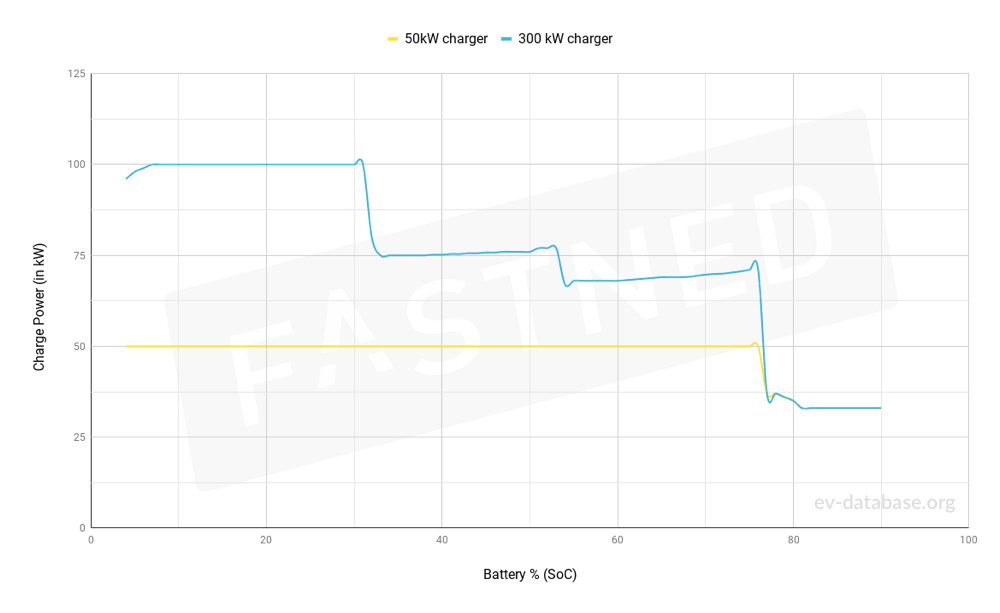 |
|
Data made available by Fastned |
| This vehicle supports Autocharge |
|---|
† = Limited by charging capabilities of vehicle
Autocharge: allows for a vehicle to initiate charging automatically on supported CCS charge points.
Actual charging rates may differ from data shown due to factors like outside temperature, state of the battery and driving style.
(Advertisement)
2023 Fiat E-Ulysse: FIAT’s 2nd step into the world of electric
New E-Ulysse enjoys all the benefits of electric traction, such as entry into restricted traffic zones in town hall and silent engines. It likewise stands out from other MPVs for the measurements that put it at the top of the section for compactness, guaranteeing complete liberty of movement – E-Ulysse goes everywhere, consisting of all underground parking lots – and excellent handling. In fact, it drives like a regular car.
Together with the modularity of the interior and its capacity to accommodate approximately 8 people, these features make it suitable for transportation services for hotels, taxis and VIP transfers.
New E-Ulysse is the second turning point in the FIAT brand’s journey towards sustainable mobility. This uncompromising decision has led to requirements and performance in line with customers’ requirements:
- two battery capacities, 50 and 75 kWh, to use the best option depending on use
- series of up to 330 km in the WLTP cycle, the ideal service for free motion in the city and out of town, conference everybody’s mobility needs
- top speed of 130 km/h
- maximum power of 100 kW (136 hp).
- torque of 260 Nm.
- fitted as basic with 100-kW fast charge system to charge the battery to 80% in just 45 minutes.
- for charging in the house or in public, customers can also purchase a three-phase 11-kW Mode 3 cable television or a Wallbox by Mopar.
Fast Charging (10 -> 80%)
Rapid charging enables longer journeys by adding as much range as possible in the shortest amount of time. Charging power will decrease significantly after 80% state-of-charge has been reached. A typical rapid charge therefore rarely exceeds 80% SoC. The rapid charge rate of an EV depends on the charger used and the maximum charging power the EV can handle. The table below shows all details for rapid charging the Fiat E-Ulysse L2 50 kWh.
- Max. Power: maximum power provided by charge point
- Avg. Power: average power provided by charge point over a session from 10% to 80%
- Time: time needed to charge from 10% to 80%
- Rate: average charging speed over a session from 10% to 80%
Europe
| Combined Charging System (CCS Combo 2) |
|---|
| Charging Point | Max. Power | Avg. Power | Time | Rate |
|---|---|---|---|---|
| CCS (50 kW DC) | 50 kW | 40 kW † | 51 min | 150 km/h |
| CCS (100 kW DC) | 100 kW | 75 kW † | 27 min | 280 km/h |
| CCS (150 kW DC) | 101 kW † | 78 kW † | 26 min | 290 km/h |
| This vehicle supports Autocharge |
|---|
† = Limited by charging capabilities of vehicle
Autocharge: allows for a vehicle to initiate charging automatically on supported CCS charge points.
Actual charging rates may differ from data shown due to factors like outside temperature, state of the battery and driving style.
(Advertisement)
